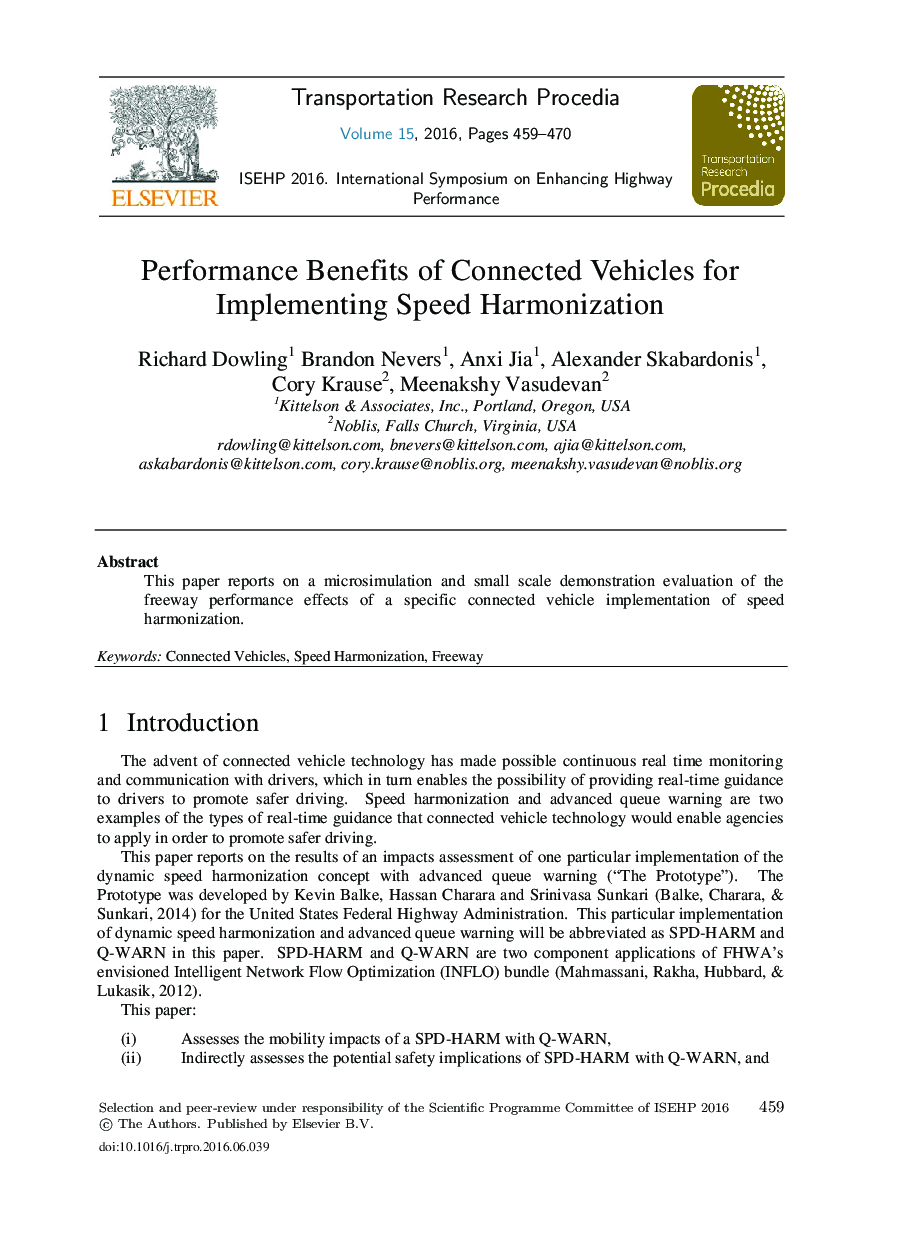| کد مقاله | کد نشریه | سال انتشار | مقاله انگلیسی | نسخه تمام متن |
|---|---|---|---|---|
| 1106130 | 1488280 | 2016 | 12 صفحه PDF | دانلود رایگان |
This paper reports on the combined microsimulation and small scale demonstration evaluation of the freeway performance effects of a specific connected vehicle implementation of speed harmonization (The Prototype). The microsimulation testing was performed on a 10 mile stretch of freeway in San Mateo County, California. The small scale field demonstration was performed with 10 equipped vehicles on 17 miles of the I-5 freeway in Seattle, Washington.The microsimulation analysis evaluated the effects of the Prototype speed harmonization algorithm on shockwaves, queues, throughput, speed variation, travel time, and reliability, for different response rates for vehicles on the facility. The “response rate” is defined as the combination of the percent of the vehicle fleet with connected vehicle capabilities, the percent of connected vehicles that successfully receive the speed recommendation in a timely manner, and the percent of drivers who having received the recommendation also choose to comply with the recommended speed.Results from the simulation analysis found that the Prototype is likely to significantly reduce the magnitude of the speed differences (shockwaves) between vehicles, even at the 10-percent response rate. This is considered to benefit safety by reducing the probability of collisions where free-flowing traffic meets the back of a queue. The trade-off for the improved safety is that the Prototype increases the geographic impact of existing bottlenecks on freeway speeds by expanding the upstream distance that is affected by congestion.The small scale field demonstration evaluated the performance of a cell phone based application for communicating vehicle status and receiving recommended speeds and advanced queue warnings using a combination of the cellular network and roadside dedicated short range communication devices via a DSRC antenna installed in the vehicle. The small scale demonstration also evaluated the ability to detect queues via a combination of installed loop detectors in the road and basic safety messages transmitted by the connected vehicles.The small scale field demonstration showed the feasibility of connected vehicle data capture and dissemination functionality using both cellular communications and Dedicated Short Range (DSRC) communications. It demonstrated that the Prototype has the communication speeds, communication reliability, and computed processing speed to support speed harmonization application functionality in an operational traffic environment.This paper is based upon work supported by the Federal Highway Administration under contract number DTFH61-12-D-00044. Any opinions, findings, and conclusions or recommendations expressed in this publication are those of the authors and do not necessarily reflect the views of the Federal Highway Administration.
Journal: Transportation Research Procedia - Volume 15, 2016, Pages 459–470
